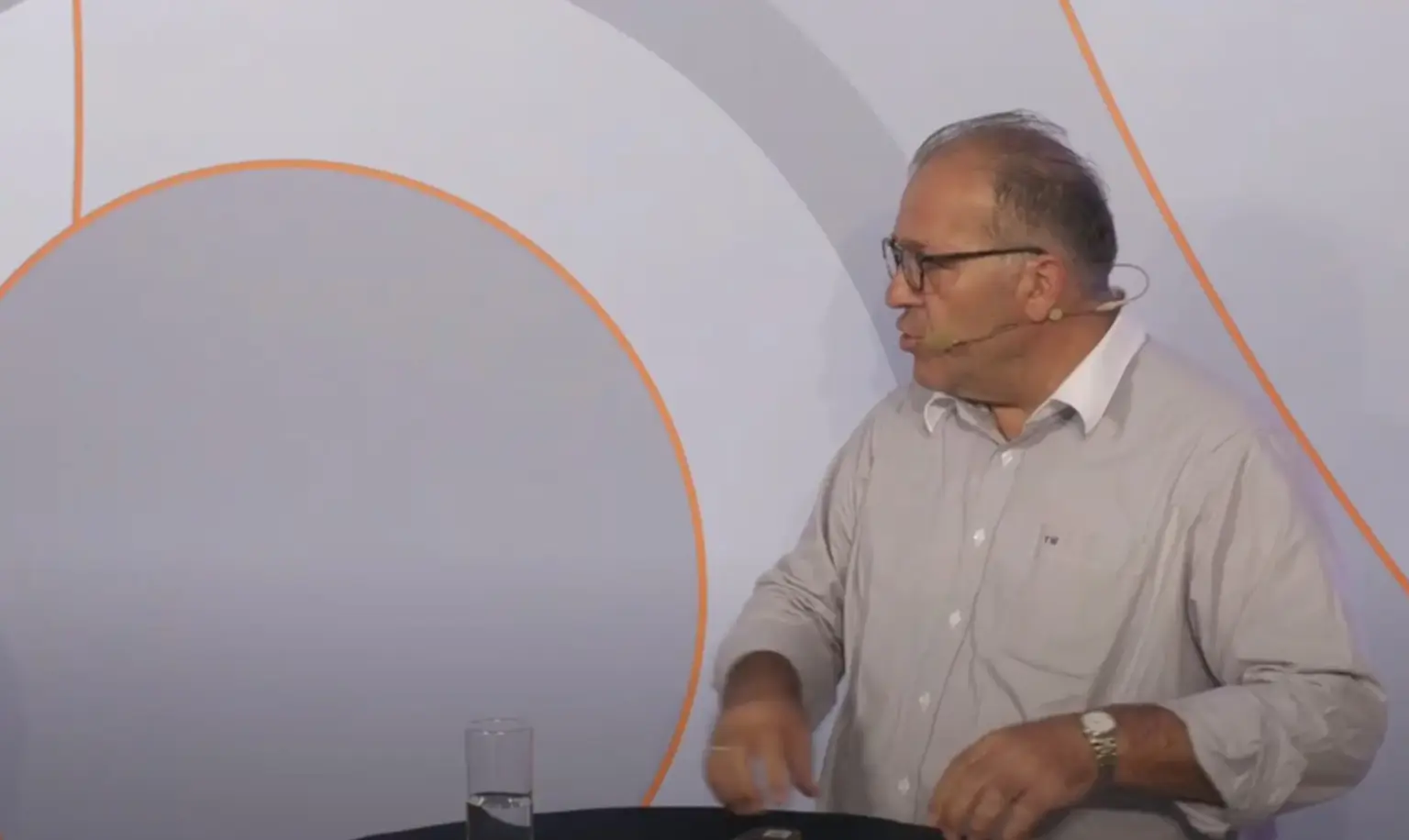
The largest buyer salary report 2025 in DACH
Anonymous. Independent. Exclusive.
The Kloepfel Group has been analyzing salaries in purchasing and supply chain management every year since 2013. In 2025, 1,936 employees from the DACH region took part. The report shows salary differences by industry, region and company size and highlights factors such as position, experience, education, AI and digitalization. Get all relevant insights for Germany, Austria and Switzerland.
Use the results of the buyer salary report to make more of your career - to position yourself better and be more successful in interviews. This year's exclusive partner for the entire study is procure.ch.
- Exclusive insights: in-depth salary benchmarks specifically for the DACH region
- Relevant comparative values: Current data on salaries, role profiles, industries, career paths and further training opportunities.
- Valuable orientation: Supports specialists and managers in determining their professional position and conducting negotiations.
Purchaser Salary Report 2025
That's why it's worth taking part in the Kloepfel Salary Report 2025:
- Fast & anonymous: The survey only takes about 5 minutes and is completely anonymous.
- Access before publication: All participants will receive the complete Salary Report 2025 exclusively before publication.
- Exclusive bonus: Survey participants will receive an invitation to the Kloepfel live webinar "AI in Purchasing".
- Industry-specific insights & reports: In addition, all participants receive our latest reports for the automotive, mechanical engineering and retail sectors as a bonus.

The largest
buyer salary report
2025
- 0:55 Min
The largest buyer salary report 2025 in DACH - partial report Switzerland
The Kloepfel Group has been analyzing salaries in purchasing and supply chain management every year since 2013. In 2025, 1,936 employees from the DACH region took part. Particularly pleasing: there are 718 fully completed questionnaires from Switzerland. The Switzerland sub-report shows salary differences by industry, region and company size and highlights factors such as position, experience, education, AI and digitalization.
Use the results of the Switzerland sub-report to make more of your career - to position yourself better and be more successful in interviews. This year's exclusive partner for the entire study is procure.ch.
- Exclusive insights: Sound salary benchmarks specifically for Swiss procurement
- Relevant comparative values: Current data on salaries, role profiles, industries, career paths and further training opportunities.
- Valuable orientation: Supports specialists and managers in determining their professional position and conducting negotiations.
Exclusive partner:

procure.ch: News on purchasing & procurement - To the newsletter of procure.ch
Partial report Switzerland 2025

Why is a potential analysis of freight costs important?
As part of the potential analysis, we provide the customer with a neutral compass. The aim is to provide the customer with a clear guide that enables them to make sound decisions about possible optimizations and savings in the area of freight costs. They achieve average cost savings of 16.5%, which contribute 1:1 to profit growth
What savings are possible?
On average, the projects achieve savings of around 16.5%. The results vary depending on the sector, with the savings in road transport roughly corresponding to this average. In the volatile sea freight sector, savings can also exceed 20%.
What does it mean that we reduce freight costs on a profit and loss basis?
Companies only pay us a fee if savings in freight costs are actually achieved. This model gives us confidence in the effectiveness of the measures derived from the potential analysis. Our conservative, realistic analysis results are even exceeded in many projects.
When should a potential analysis of freight costs be carried out?
A freight cost potential analysis should be carried out as early as possible. The sooner potential is identified, the sooner it can be leveraged. This is particularly relevant in the classic general cargo sector, which can be found in almost every company. Annual contracts are often concluded here, which means that early savings over a period of one year lead to financial benefits.
How is the data collected for analysis?
We take a lean approach to collecting the necessary data. We communicate primarily with those responsible within the business unit to be analyzed. This usually includes the purchasing manager and / or the logistics manager. It is important to note that confidentiality is maintained through non-disclosure agreements (NDAs). This means that we do not exchange any information with suppliers without the customer's consent. The data collected includes classic information such as tariffs, sample invoices and a list of vendors. This process is deliberately designed to be efficient in order to enable quick and effective analysis and to protect the customer's capacities.
How long does such a potential analysis take?
The first step is to collect data on the areas to be analyzed. Sometimes the required data can be obtained within a few hours. In other cases, it can take a few days, especially if the requests are complex or if the customer has initially provided incomplete data that needs to be updated or completed. We generally allow about a week for data collection, especially for larger projects. Including the time for analysis and recommendations for action, the entire process can take around two to three weeks, depending on the availability of those involved and the data.
What specific tools does Kloepfel Consulting use to identify savings?
The collection of data for the potential analysis is carried out in close cooperation with the companies, taking into account the specifications and needs of the respective project. We use specific tools to carry out a reliable analysis.
On the one hand, we use the TI Contract tendering tool from Transporeon. This tendering tool enables an immense range in the tendering of transportation services. This allows us to obtain many offers in a short space of time and use them as benchmarks for analyzing potential.
In the sea and air freight sector, we use a cost-intensive external benchmark tool called Xeneta. This tool is specially designed for these modes of transport. Its specialization and timeliness in the volatile transport environment make it a valuable instrument for identifying potential savings. It enables us to draw precise benchmarks for the same period. Customers benefit from the benchmarks generated by this tool without having to bear the high costs themselves.
While we purchase long-term rates with an average validity of one year in the road and CEP sectors, we use Xeneta to look at short-term price benchmarks for sea and air freight due to the volatile market.
We also benefit from our extensive data pool, which is fed by the experience gained from around 50 projects each year. This data pool enables us to create up-to-date and relevant benchmarks for road, sea and air freight as well as for courier express parcel services.
The timeliness and scope of the data are crucial to identifying relevant and reliable savings potential.
How is communication and collaboration with customers organized during the analysis phase?
Communication and collaboration with companies during the analysis is closely coordinated and completely transparent. As a rule, the collaboration is very cooperative and constructive, as everyone involved benefits from the analysis. As a matter of principle, we try to make the best possible use of the client's capacities during the analyses.
How are the results of the potential analysis presented, and how detailed or reliable are they?
The results of the potential analysis are presented in a very detailed PowerPoint presentation. This presentation visually derives the figures and enables the companies to understand exactly how the benchmarks were arrived at. The results are derived very precisely; for example, euros per kilometer are used as benchmarks for complete trucks and euros per pallet for general cargo. We take a fundamentally conservative but realistic approach.
What are the typical reactions on the customer's side when they are presented with the results?
The typical reactions of customers to the results presented vary. Some customers confirm the results immediately because they correspond to their own assumptions. The spectrum ranges from immediate acceptance and the desire to implement the recommended measures as quickly as possible to critical questions, which is also important.
Ultimately, we are able to get everyone involved, as we explain objective benchmarks and derive suitable measures in a comprehensible manner. In this way, we not only identify potential savings, but also motivate everyone to leverage them.
What steps does Kloepfel Consulting recommend companies take after the analysis to implement the results?
After the analysis, we recommend that customers embark on the project in order to realize the identified savings potential. We usually work in a success-oriented manner. These recommendations are implemented through close cooperation in the various phases of the project, including tenders and negotiations with service providers. We also use the potential analysis to show what we can do and how we work, which helps us gain the client's trust.
How is project success secured in the long term?
We ensure the long-term success of the project by working closely with the company over a period of usually two years in order to make continuous adjustments and optimizations. This includes reacting to market changes, readjusting in the event of any problems with service providers and carrying out new tenders after one year. This continuous support and the performance-based model, in which Kloepfel Consulting participates in the savings, ensures that the improvements and savings achieved are sustainable in the long term.
The career guide

How to achieve your annual purchasing targets
The cross-industry challenges facing SME buyers in 2025 are manifold. Find out what challenges await you and how you can master them for your personal progress and business success.
Why is a potential analysis of freight costs important?
As part of the potential analysis, we provide the customer with a neutral compass. The aim is to provide the customer with a clear guide that enables them to make sound decisions about possible optimizations and savings in the area of freight costs. They achieve average cost savings of 16.5%, which contribute 1:1 to profit growth
What savings are possible?
On average, the projects achieve savings of around 16.5%. The results vary depending on the sector, with the savings in road transport roughly corresponding to this average. In the volatile sea freight sector, savings can also exceed 20%.
What does it mean that we reduce freight costs on a profit and loss basis?
Companies only pay us a fee if savings in freight costs are actually achieved. This model gives us confidence in the effectiveness of the measures derived from the potential analysis. Our conservative, realistic analysis results are even exceeded in many projects.
When should a potential analysis of freight costs be carried out?
A freight cost potential analysis should be carried out as early as possible. The sooner potential is identified, the sooner it can be leveraged. This is particularly relevant in the classic general cargo sector, which can be found in almost every company. Annual contracts are often concluded here, which means that early savings over a period of one year lead to financial benefits.
How is the data collected for analysis?
We take a lean approach to collecting the necessary data. We communicate primarily with those responsible within the business unit to be analyzed. This usually includes the purchasing manager and / or the logistics manager. It is important to note that confidentiality is maintained through non-disclosure agreements (NDAs). This means that we do not exchange any information with suppliers without the customer's consent. The data collected includes classic information such as tariffs, sample invoices and a list of vendors. This process is deliberately designed to be efficient in order to enable quick and effective analysis and to protect the customer's capacities.
How long does such a potential analysis take?
The first step is to collect data on the areas to be analyzed. Sometimes the required data can be obtained within a few hours. In other cases, it can take a few days, especially if the requests are complex or if the customer has initially provided incomplete data that needs to be updated or completed. We generally allow about a week for data collection, especially for larger projects. Including the time for analysis and recommendations for action, the entire process can take around two to three weeks, depending on the availability of those involved and the data.
What specific tools does Kloepfel Consulting use to identify savings?
The collection of data for the potential analysis is carried out in close cooperation with the companies, taking into account the specifications and needs of the respective project. We use specific tools to carry out a reliable analysis.
On the one hand, we use the TI Contract tendering tool from Transporeon. This tendering tool enables an immense range in the tendering of transportation services. This allows us to obtain many offers in a short space of time and use them as benchmarks for analyzing potential.
In the sea and air freight sector, we use a cost-intensive external benchmark tool called Xeneta. This tool is specially designed for these modes of transport. Its specialization and timeliness in the volatile transport environment make it a valuable instrument for identifying potential savings. It enables us to draw precise benchmarks for the same period. Customers benefit from the benchmarks generated by this tool without having to bear the high costs themselves.
While we purchase long-term rates with an average validity of one year in the road and CEP sectors, we use Xeneta to look at short-term price benchmarks for sea and air freight due to the volatile market.
We also benefit from our extensive data pool, which is fed by the experience gained from around 50 projects each year. This data pool enables us to create up-to-date and relevant benchmarks for road, sea and air freight as well as for courier express parcel services.
The timeliness and scope of the data are crucial to identifying relevant and reliable savings potential.
How is communication and collaboration with customers organized during the analysis phase?
Communication and collaboration with companies during the analysis is closely coordinated and completely transparent. As a rule, the collaboration is very cooperative and constructive, as everyone involved benefits from the analysis. As a matter of principle, we try to make the best possible use of the client's capacities during the analyses.
How are the results of the potential analysis presented, and how detailed or reliable are they?
The results of the potential analysis are presented in a very detailed PowerPoint presentation. This presentation visually derives the figures and enables the companies to understand exactly how the benchmarks were arrived at. The results are derived very precisely; for example, euros per kilometer are used as benchmarks for complete trucks and euros per pallet for general cargo. We take a fundamentally conservative but realistic approach.
What are the typical reactions on the customer's side when they are presented with the results?
The typical reactions of customers to the results presented vary. Some customers confirm the results immediately because they correspond to their own assumptions. The spectrum ranges from immediate acceptance and the desire to implement the recommended measures as quickly as possible to critical questions, which is also important.
Ultimately, we are able to get everyone involved, as we explain objective benchmarks and derive suitable measures in a comprehensible manner. In this way, we not only identify potential savings, but also motivate everyone to leverage them.
What steps does Kloepfel Consulting recommend companies take after the analysis to implement the results?
After the analysis, we recommend that customers embark on the project in order to realize the identified savings potential. We usually work in a success-oriented manner. These recommendations are implemented through close cooperation in the various phases of the project, including tenders and negotiations with service providers. We also use the potential analysis to show what we can do and how we work, which helps us gain the client's trust.
How is project success secured in the long term?
We ensure the long-term success of the project by working closely with the company over a period of usually two years in order to make continuous adjustments and optimizations. This includes reacting to market changes, readjusting in the event of any problems with service providers and carrying out new tenders after one year. This continuous support and the performance-based model, in which Kloepfel Consulting participates in the savings, ensures that the improvements and savings achieved are sustainable in the long term.

10 skills for an extraordinary career in purchasing
- 16:29 Min
Webinar recording
"Salary coaching for buyers"
More input?
If you missed the live webinar, you can now watch the entire recording here. In this webinar, we covered important topics around salary strategies and negotiations for buyers that will give you valuable input for your professional development.
Find out more about the current salary structures, proven tips for successful negotiations and how you can advance your career in purchasing and supply chain management.

Salary coaching for purchasers
- 16:29 Min

